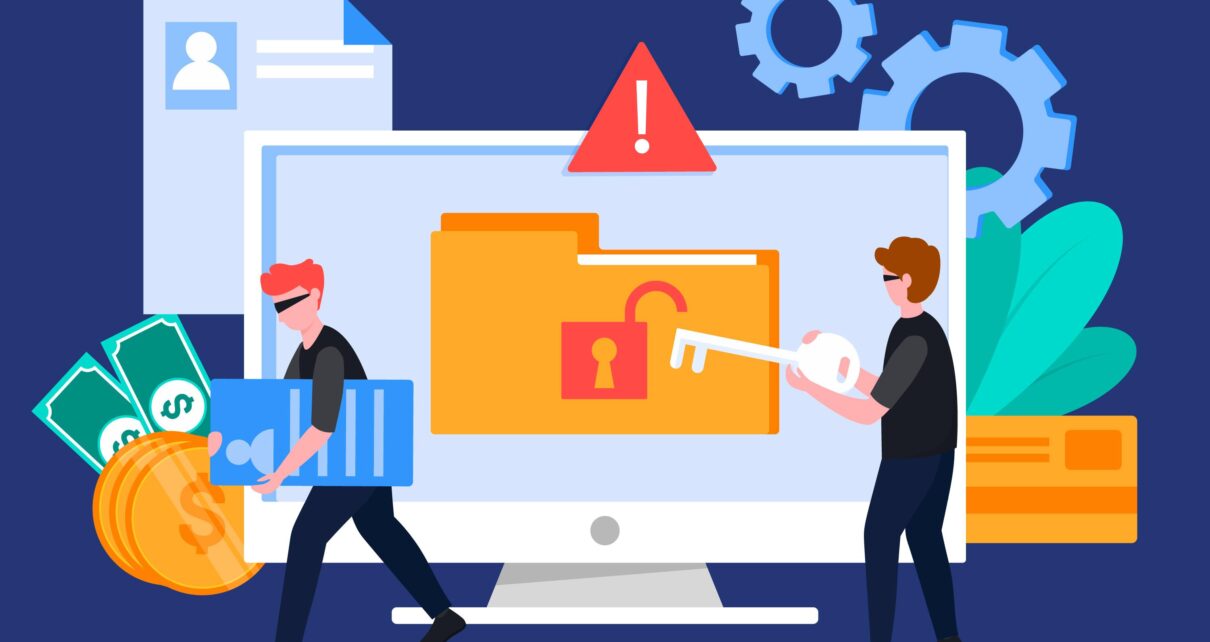What is Data Security?
Everything in the world today, from a person’s personal information to a large organization, is made up of data.
Data is information, and today it is present in various forms, including text, audio, and video. The first step whenever we begin working on a new project for anything in any industry is always to gather data on the project’s subject.
The world runs smoothly based on these data points, and it is also how knowledge or information is passed on from one generation to the next. Therefore, it’s important to protect the data.
Today we have our digital gadgets handy, like mobile, laptops, and tablets and we use them fully to store all kinds of data, though it feels like a big convenience it also comes with the risk of the data getting breached.
In today’s technologically advanced environment, the available storage space for data has risen significantly. Although there are ways to safeguard information with passwords and other measures, everything has an error, thus there are also ways that your data might be stolen or compromised without your knowledge, hence data security or data protection is essential.
Some Common Digital Threats
Before we dive into data security measures, it’s essential to understand the common digital threats that hinder your data security you may encounter online.
Phishing Attacks:
By appearing to be reliable organizations, phishing emails, and websites try to get you to share your sensitive important data like login passwords or credit card data.
Data Breaches:
Large-scale data breaches can make your personal information accessible to hackers, which could result in fraud or identity theft.
Malware:
Software that is intended to harm, such as viruses, spyware, and ransomware. These software applications can corrupt your device, steal your data, or keep it hostage until a ransom is paid.
How to Keep Your Data Safe?
Now that we understand what is data security and what are some common types of digital threats, let’s see some easy ways to keep your data safe.
Creating Strong Password:
Creating a Strong unique password is the easiest way to protect your data. To create a strong password, use a mix of capital, lowercase, digits, and special characters in your writing.
Avoid using passwords that are simple to guess, such as “password123” or your birthdate.
Encryption of Data:
Your information is encrypted to prevent outsiders from reading it. Here’s how to put it into action:
Use secure messaging services that provide end-to-end conversation encryption.
To safeguard the data that is saved on your devices, use complete encryption.
Two-Factor Authentication:
By requesting two distinct kinds of identification before giving access, 2FA adds an extra layer of protection.
Whenever feasible, enable 2FA, especially for important accounts like banks, email, skype and chats as a lot of organisations use all mediums.
Safe Internet Browsing Practises
Use safe browsing to prevent being taken advantage of by phishing scams and dangerous websites:
Before entering sensitive details, be sure the website is genuine.
To avoid downloading files from shady sources or clicking on questionable links, be cautious. When opening email attachments, especially ones you didn’t request, proceed with caution.
What does Virus Removal mean?
When something from out, comes inside our body through food or water our body gets infected and we get cold and viral fever as a result.
Similarly, our computers and laptops also get infected by a computer virus, malware or other malicious program.
Even after a lot of precautions Viruses sometimes manage to get onto your devices despite all your efforts. It’s important to know how to identify infections and how to get rid of viruses.
Recognising Infection Signs
Typical signs of a computer virus infection include:
Ineffective performance
recurring freezes or crashes
Pop-ups or advertising that are not welcome
Unaccounted-for data consumption
unexpected disappearance or encryption of files
There are some common ways in which computer virus gets inside computer or laptops as follows:
Clicking on harmful links:
Nowadays our work happens on computers, laptops or phones and while using them we come across a lot of links you can easily get the computer infected by clicking on these links that lead to malicious websites in emails, pop-up advertising, or social media posts.
These links may start automated downloads or direct you to websites that take advantage of flaws in your operating system or browser.
Email Attachments:
Emails have their importance and every time we hear this “we shouldn’t ignore our emails” but it’s important to ignore certain emails.
Opening email attachments from unreliable sources might infect your machine with malware. Virus attachments frequently pose as trustworthy files or documents.
Outside devices:
Malware can also be transmitted using infected USB devices, external hard drives, and other detachable media. The infection can be sent to your computer by plugging in these gadgets.
Scams on social media:
Social media has taken up a lot of space in our lives, nowadays we spend more time with our phones on social media than with our real-life people.
These hackers are no other but people like us only and they know our behaviors and surely take advantage of them, they purposely send Links or messages on these platforms and when clicking on such links, it may direct users to dangerous websites or downloads that lead to virus installation in your PC or laptop.
Malvertising:
The term “ Malvertising” Stands for advertisements that contain viruses. And
On trustworthy websites, harmful advertising may be posted by cybercriminals.
To invade your personal space with Malware infections which might result from clicking on these adverts.
Downloading malicious files
Downloading harmful files via the internet is one of the most popular and common ways to spread malware.
This might involve installing pirated software, downloading data from dubious websites, or downloading attachments from questionable emails.
How to Get Rid of a Virus
It takes a methodical technique to remove a virus or malware attack from your computer so that your system is completely cleaned and safeguarded. The steps are as follows:
Know the location of the Virus:
To determine the kind of virus and where to find the virus, run a reliable antivirus or anti-malware scan.
A “Full Scan” option is included in many antivirus programs, and it completely scans your machine.
Shut Down Your Computer:
To stop the virus from infecting other devices, disconnect your infected computer from the internet and any local networks, unless and until it’s not fixed.
Remove harmful files:
Delete the contaminated files from your computer after isolating them. Avoid accidentally deleting any system files because doing so might lead to functional problems.
Conclusion:
Data security and virus removal both are important components of keeping a safe and secure online presence in the digital age.
There is high chance that by taking all the precautions mentioned above you may keep your private data and digital assets safe & secure from Viruses and data loss.
Keep in mind that protecting your digital life requires being proactive and watchful. Therefore, take the necessary steps to tighten your defences and enjoy the advantages of the digital world safely.



